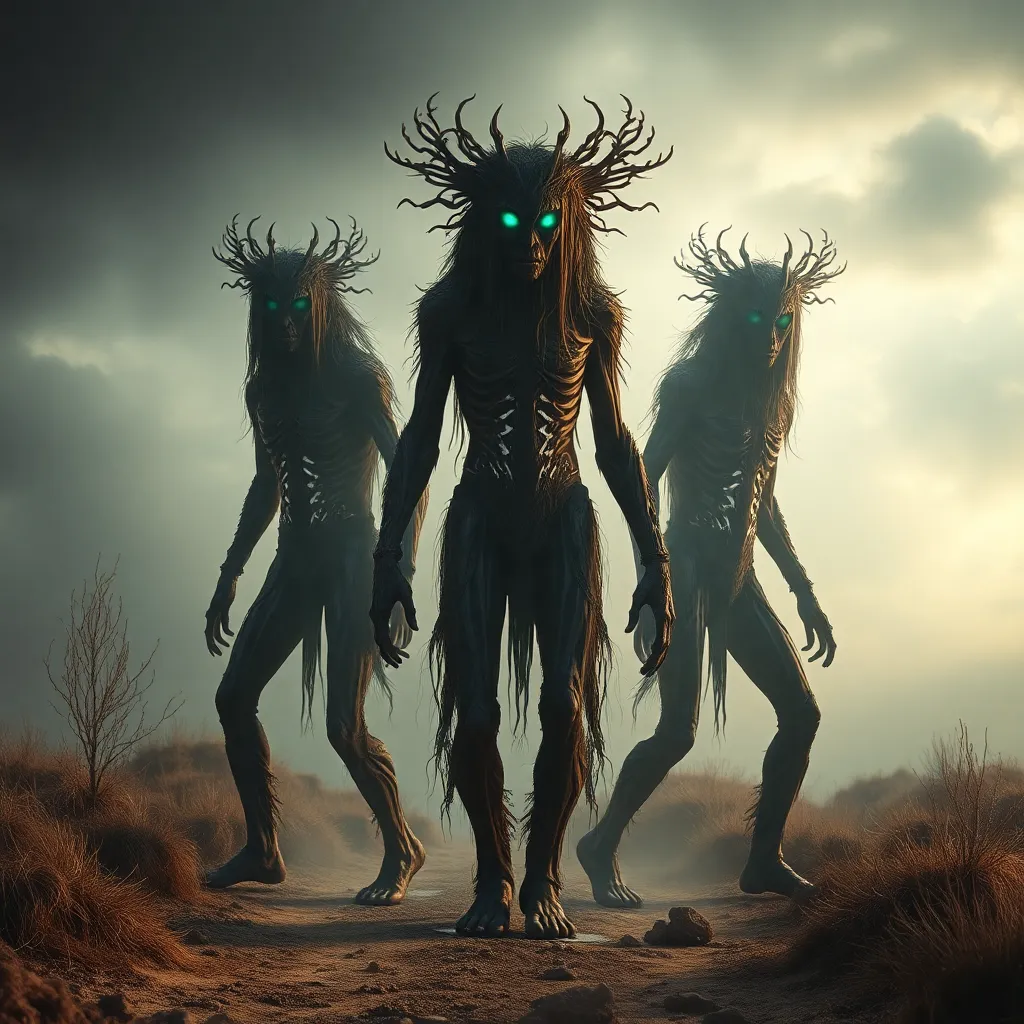The Skinwalker Phenomenon: A Modern Investigation into Shapeshifting
I. Introduction
The concept of skinwalkers is deeply rooted in Navajo culture, representing a unique form of shapeshifting that is both feared and revered. In Navajo tradition, a skinwalker is a witch who has the ability to transform into various animals, typically for malevolent purposes. This phenomenon extends beyond mere folklore, tapping into broader themes of transformation and the supernatural.
The purpose of this article is to explore modern perspectives on skinwalkers, examining historical origins, contemporary sightings, and the intersection of science and mythology. Through this exploration, we aim to shed light on how ancient beliefs continue to resonate in today’s society.
II. Historical Background of Skinwalker Legends
A. Origins in Navajo Folklore
Skinwalker legends originate from the Navajo people, where they are known as “yee naaldlooshii.” These beings are often described as malevolent witches who can assume the forms of animals, such as wolves, coyotes, or bears. The origins of these legends are tied to traditional beliefs about sorcery, healing, and the intricate relationship between humans and nature.
B. Cultural Significance and Traditional Beliefs
In Navajo culture, skinwalkers are associated with the violation of societal norms and the use of dark magic. They embody the fear of betrayal and the consequences of straying from cultural values. The tales serve as cautionary stories, warning against the dangers of envy and the misuse of power.
C. Evolution of the Skinwalker Myth Across Cultures
While skinwalkers are specific to Navajo culture, similar shapeshifting legends exist in various cultures worldwide. From the werewolves of European folklore to the shapeshifting tricksters in Indigenous Australian narratives, the concept of transformation transcends geographic boundaries, highlighting a universal fascination with the fluidity of identity.
III. The Science of Shapeshifting: Myth vs. Reality
A. Psychological Explanations for Shapeshifting Beliefs
Psychologists have explored the reasons behind shapeshifting beliefs, often linking them to psychological phenomena such as projection and the human desire for transformation. These beliefs may serve as a means of processing complex emotions or societal fears.
B. The Role of Hallucinations and Altered States of Consciousness
Altered states of consciousness, whether induced by stress, trauma, or substance use, can contribute to experiences of shapeshifting. Hallucinations may lead individuals to perceive themselves or others as transforming, blurring the lines between reality and myth.
C. Cryptozoological Perspectives: Fact or Fiction?
Cryptozoologists often investigate reports of skinwalker sightings, seeking to uncover any factual basis behind the legends. However, the scientific community generally regards these claims with skepticism, emphasizing the need for empirical evidence.
IV. Modern Sightings and Reports
A. Documentation of Contemporary Skinwalker Encounters
In recent years, numerous reports of skinwalker sightings have emerged, particularly in the Southwestern United States. These encounters often describe unsettling experiences, where witnesses claim to have seen figures transforming into animals or exhibiting unnatural behavior.
B. Analysis of Eyewitness Accounts and Consistencies
Despite the variability in individual accounts, certain themes persist across sightings. Common descriptions include:
- Unnatural speed and agility of the creature
- Unusual vocalizations that mimic human speech
- A strong sense of dread or malevolence during encounters
C. Media Influence: From Folklore to Pop Culture
The portrayal of skinwalkers in media has played a significant role in shaping public perception. From horror films to television series, these representations often sensationalize the legend, sometimes overshadowing its cultural roots and significance.
V. Investigative Methods: Researching the Skinwalker Phenomenon
A. Tools and Techniques Used in Modern Investigations
Researchers employ various methods to investigate skinwalker phenomena, including:
- Field research to collect firsthand accounts
- Audio and video recordings to document sightings
- Analysis of geographical and cultural contexts
B. Interviews with Witnesses, Experts, and Cultural Practitioners
Gathering insights from those who have experienced skinwalker encounters, as well as from cultural practitioners, is crucial to understanding the phenomenon. These interviews can reveal the emotional impact of these experiences and the cultural significance behind them.
C. Ethical Considerations in Investigating Indigenous Beliefs
When researching indigenous beliefs, it is essential to approach the subject with respect and sensitivity. Researchers must navigate the fine line between academic inquiry and cultural appropriation, ensuring that Indigenous narratives are honored and accurately represented.
VI. The Role of Technology in Understanding Shapeshifting
A. Use of Drones and Cameras in Researching Sightings
Advancements in technology, such as drones and high-resolution cameras, provide new avenues for documenting alleged skinwalker sightings. These tools allow for a more thorough investigation of locations and can capture evidence that may have previously gone unnoticed.
B. Digital Storytelling and the Spread of Skinwalker Lore Online
The internet has become a platform for sharing skinwalker stories, with forums and social media enabling the rapid dissemination of folklore. This digital storytelling fosters a sense of community among those interested in the phenomenon, while also allowing for critical discussions about belief and skepticism.
C. The Impact of Social Media on Modern Folklore
Social media has significantly influenced the evolution of skinwalker lore. Viral posts and videos can lead to widespread interest and new interpretations of traditional stories, often blending fact with fiction.
VII. The Intersection of Science and Mythology
A. Bridging the Gap Between Cultural Beliefs and Scientific Inquiry
Investigating skinwalker legends presents an opportunity to bridge cultural beliefs with scientific inquiry. By examining these tales through a multidisciplinary lens, researchers can gain valuable insights into the human experience and the nature of belief.
B. The Importance of Respecting Indigenous Narratives
When studying skinwalkers, it is paramount to respect the narratives and traditions of the Navajo people. Understanding the cultural significance of these legends fosters greater appreciation and prevents misrepresentation.
C. How Modern Investigations Can Shape Cultural Understanding
Modern investigations into skinwalker phenomena can lead to deeper cultural understanding and strengthen the dialogue between Indigenous traditions and contemporary society. This can foster mutual respect and appreciation for diverse worldviews.
VIII. Conclusion
A. Summary of Key Findings and Perspectives
This exploration of the skinwalker phenomenon highlights the intricate relationship between folklore and modern belief systems. From historical origins to contemporary investigations, skinwalkers represent a compelling intersection of culture, psychology, and mythology.
B. The Continuing Relevance of Skinwalker Legends in Contemporary Society
Skinwalker legends remain relevant today, reflecting societal fears and the human inclination to seek explanations for the unknown. These stories continue to resonate, serving as a reminder of the power of belief and the complexities of cultural identity.
C. Final Thoughts on the Nature of Belief and the Human Experience
Ultimately, the phenomenon of skinwalkers invites us to reflect on our understanding of reality, belief, and the narratives we construct. As we navigate the realms of myth and science, we uncover deeper truths about ourselves and the world around us.



